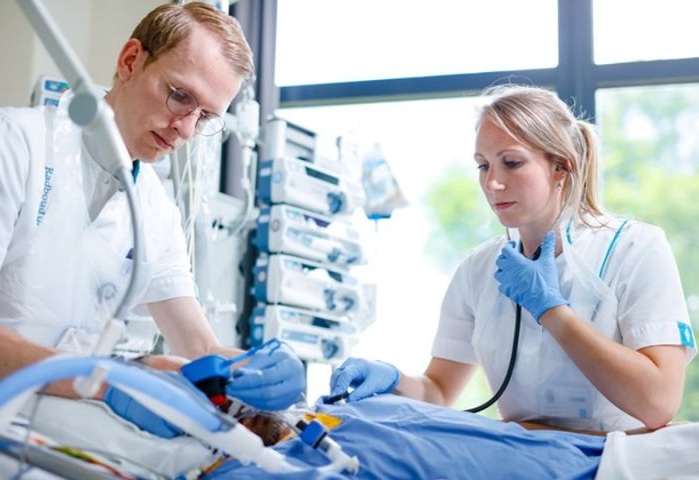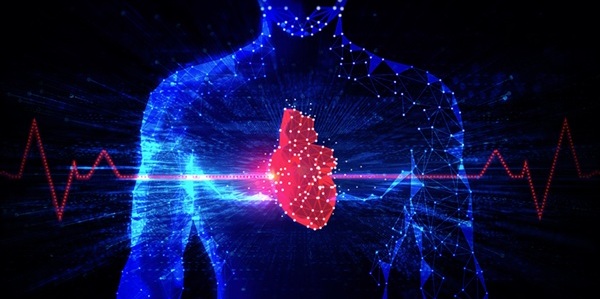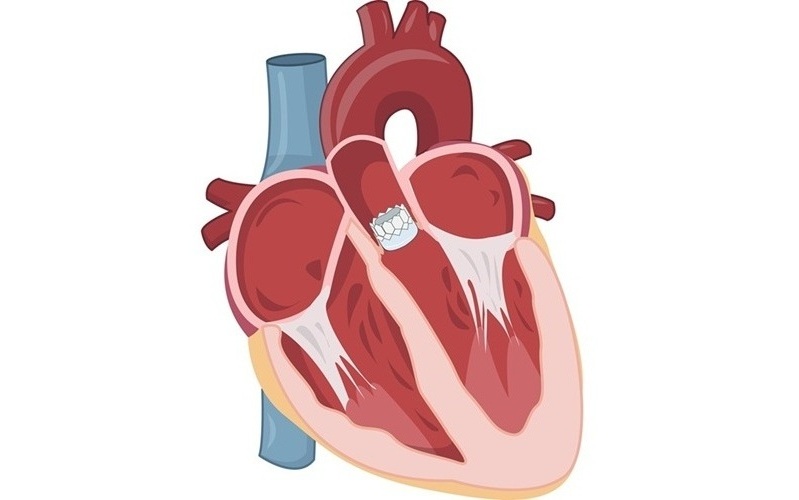Cardiac MRI Research Study Shows Men’s Hearts Age Differently from Those of Women
|
By HospiMedica International staff writers Posted on 26 Oct 2015 |
Researchers have released the results of a large multiethnic observational study involving 2,935 participants, and focused on cardiovascular disease.
None of the participants had clinical cardiovascular disease at the beginning of the study. The ages of the participants were between 54 and 94 years at follow-up, and the median time between the baseline, and follow-up cardiac Magnetic Resonance Imaging (MRI) exam was 9.4 years.
The study was published in the journal Radiology. John Eng, MD, from Johns Hopkins University School of Medicine (Baltimore, MD, USA) and other researchers who conducted the study found that left ventricular volume decreased in both women and men. In men left ventricular mass increased and in women it decreased slightly. The mass of the left ventricle is a predictor of cardiovascular events, and may increase in thickness to compensate for conditions such as high blood pressure. The study also showed the advantages of using cardiac MRI for measuring left ventricular mass, compared to other imaging modalities.
The study assessed long-term changes in the participants, while previous studies have been cross-sectional, or focused on one point in time, comparing different age groups. The results of the study seem to confirm the significance of blood pressure and diet in cardiac health. There was an inverse association between ventricular mass and high-density lipoprotein cholesterol, and hypertension that was treated. According to the results of the study increased ventricular mass however was related to higher blood pressure, and body mass index. The results of the study may indicate a need for different treatment approaches for women and men.
John Eng, said, "We had the opportunity to reexamine the same people after 10 years so that we could see what happened to their hearts after a decade. This is a more reliable way to assess left ventricular changes over time. The shape of the heart changes over time in both men and women, but the patterns of change are different. Men's hearts tend to get heavier and the amount of blood they hold is less, while women's hearts don't get heavier. We've been talking a lot lately about personalized medicine, and here's an example where perhaps men and women might have to be treated differently. Most heart imaging is done by echocardiography, but the measurements require a few assumptions and may not be as precise as you would like. MRI gives you clearer pictures of the heart, allowing more precise computerized measurements."
Related Links:
Johns Hopkins University School of Medicine
None of the participants had clinical cardiovascular disease at the beginning of the study. The ages of the participants were between 54 and 94 years at follow-up, and the median time between the baseline, and follow-up cardiac Magnetic Resonance Imaging (MRI) exam was 9.4 years.
The study was published in the journal Radiology. John Eng, MD, from Johns Hopkins University School of Medicine (Baltimore, MD, USA) and other researchers who conducted the study found that left ventricular volume decreased in both women and men. In men left ventricular mass increased and in women it decreased slightly. The mass of the left ventricle is a predictor of cardiovascular events, and may increase in thickness to compensate for conditions such as high blood pressure. The study also showed the advantages of using cardiac MRI for measuring left ventricular mass, compared to other imaging modalities.
The study assessed long-term changes in the participants, while previous studies have been cross-sectional, or focused on one point in time, comparing different age groups. The results of the study seem to confirm the significance of blood pressure and diet in cardiac health. There was an inverse association between ventricular mass and high-density lipoprotein cholesterol, and hypertension that was treated. According to the results of the study increased ventricular mass however was related to higher blood pressure, and body mass index. The results of the study may indicate a need for different treatment approaches for women and men.
John Eng, said, "We had the opportunity to reexamine the same people after 10 years so that we could see what happened to their hearts after a decade. This is a more reliable way to assess left ventricular changes over time. The shape of the heart changes over time in both men and women, but the patterns of change are different. Men's hearts tend to get heavier and the amount of blood they hold is less, while women's hearts don't get heavier. We've been talking a lot lately about personalized medicine, and here's an example where perhaps men and women might have to be treated differently. Most heart imaging is done by echocardiography, but the measurements require a few assumptions and may not be as precise as you would like. MRI gives you clearer pictures of the heart, allowing more precise computerized measurements."
Related Links:
Johns Hopkins University School of Medicine
Latest Critical Care News
- Precision Approach Improves Immunotherapy Effectiveness for ICU Patients with Sepsis
- Soft Robots Could Donate Their Heart to Humans
- Bioadhesive Strategy Prevents Fibrosis Around Device Implants on Peripheral Nerves
- Miniature Non-Invasive Robotic Catheters to Improve Infertility Treatments
- Stick-On Patch Monitors Baby's Movements In Utero
- EEG-Based AI Technology Accurately Diagnoses Alzheimer’s and Dementia
- Robot Lymphatic System Paves Way for Self-Powered Wearables and Machines
- Focused Ultrasound Technique Successfully Treats Pediatric Brain Cancer
- Nasal Drops Fight Brain Tumors Noninvasively
- AI Helps Optimize Therapy Selection and Dosing for Septic Shock
- Glowing Bacteria ‘Pills’ for Detecting Gut Diseases Could Eliminate Colonoscopies
- Skin-Permeable Polymer Patch Delivers Insulin Non-Invasively Through Skin
- Nanogel Technology Almost 100% Effective in Destroying Drug-Resistant Bacteria Within Hours
- Wearable Ultrasound Sensor Delivers Noninvasive Treatment Without Surgery
- Gel-Free ECG System to Transform Heart Health Diagnosis
- Biodegradable Patch Repairs Damaged Tissue After Heart Attack
Channels
Critical Care
view channel
Precision Approach Improves Immunotherapy Effectiveness for ICU Patients with Sepsis
Sepsis occurs when the immune system responds abnormally to an infection, often triggering life-threatening organ failure. Despite affecting around 49 million people globally each year and causing approximately... Read more
Soft Robots Could Donate Their Heart to Humans
Heart failure is a growing global health burden, and existing artificial hearts and mechanical pumps often fall short of long-term clinical needs. Many current devices rely on rigid components and complex... Read moreSurgical Techniques
view channel
Minimally Invasive Surgery Proven Safe and Effective for Complex ‘Whipple’ Procedure
Tumors of the pancreatic head often require a highly complex operation known as pancreatoduodenectomy or the Whipple procedure. This surgery involves removing multiple structures and creating several internal... Read more
Catheter-Based Procedures Offer Less Invasive Option for Treatment of Valvular Disease
Valvular heart disease, caused by tight or leaky valves between heart chambers, affects up to 10% of older adults and leads to more than 120,000 deaths globally each year. Traditional open-heart surgery... Read morePatient Care
view channel
Revolutionary Automatic IV-Line Flushing Device to Enhance Infusion Care
More than 80% of in-hospital patients receive intravenous (IV) therapy. Every dose of IV medicine delivered in a small volume (<250 mL) infusion bag should be followed by subsequent flushing to ensure... Read more
VR Training Tool Combats Contamination of Portable Medical Equipment
Healthcare-associated infections (HAIs) impact one in every 31 patients, cause nearly 100,000 deaths each year, and cost USD 28.4 billion in direct medical expenses. Notably, up to 75% of these infections... Read more
Portable Biosensor Platform to Reduce Hospital-Acquired Infections
Approximately 4 million patients in the European Union acquire healthcare-associated infections (HAIs) or nosocomial infections each year, with around 37,000 deaths directly resulting from these infections,... Read moreFirst-Of-Its-Kind Portable Germicidal Light Technology Disinfects High-Touch Clinical Surfaces in Seconds
Reducing healthcare-acquired infections (HAIs) remains a pressing issue within global healthcare systems. In the United States alone, 1.7 million patients contract HAIs annually, leading to approximately... Read moreHealth IT
view channel
EMR-Based Tool Predicts Graft Failure After Kidney Transplant
Kidney transplantation offers patients with end-stage kidney disease longer survival and better quality of life than dialysis, yet graft failure remains a major challenge. Although a successful transplant... Read more
Printable Molecule-Selective Nanoparticles Enable Mass Production of Wearable Biosensors
The future of medicine is likely to focus on the personalization of healthcare—understanding exactly what an individual requires and delivering the appropriate combination of nutrients, metabolites, and... Read moreBusiness
view channel
Philips and Masimo Partner to Advance Patient Monitoring Measurement Technologies
Royal Philips (Amsterdam, Netherlands) and Masimo (Irvine, California, USA) have renewed their multi-year strategic collaboration, combining Philips’ expertise in patient monitoring with Masimo’s noninvasive... Read more
B. Braun Acquires Digital Microsurgery Company True Digital Surgery
The high-end microsurgery market in neurosurgery, spine, and ENT is undergoing a significant transformation. Traditional analog microscopes are giving way to digital exoscopes, which provide improved visualization,... Read more
CMEF 2025 to Promote Holistic and High-Quality Development of Medical and Health Industry
The 92nd China International Medical Equipment Fair (CMEF 2025) Autumn Exhibition is scheduled to be held from September 26 to 29 at the China Import and Export Fair Complex (Canton Fair Complex) in Guangzhou.... Read more















